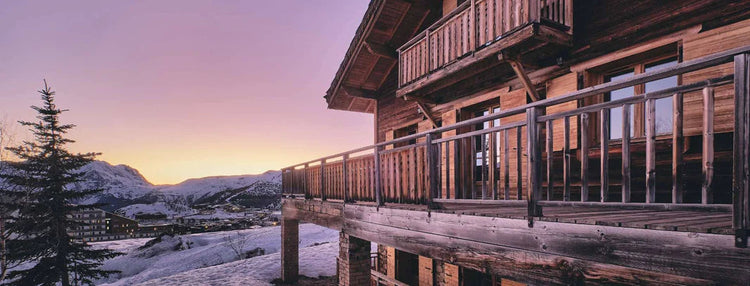Are you facing gaps in your log cabin or log home? Don't worry! Here's a step-by-step guide on how to fill gaps in your login cabin and wood checking repair.
How To Know If You Need Log Cabin Chinking Or Checking Repair
It's important to note that the upper curvature of logs is the most concerning area for checks, as it is prone to collecting moisture, fungi spores, dirt, and other contaminants. Meanwhile, larger checks on the lower curvature may not collect moisture, but they can still cause air infiltration and become an entry point for insects.
For the first 1-2 years, especially if the logs are relatively green, the initial checks will continue to open up as the logs dry out. If this opening up becomes significant enough to cause caulk or chinking to fail, it may be necessary to perform sealant repair once the logs reach moisture equilibrium with the climate of the building site.
Checking Prevention Using Log Home Stains, Log Builder Caulking, or Log Jam Chinking
-
Apply A Protective Coating
Applying a protective coating to protect water intrusion that can lead to a higher moisture content in the wood. Anything 1/4" and smaller should be flooded with a high quality log home stain.
-
Seal With Log Builder Caulking or Log Jam Chinking
For checks that are about 1/4” and larger in width (which are large enough to accept round backer rod), they can be effectively sealed with such products as Log Builder caulking, or, for a more textured appearance, Log Jam Chinking.
Step-By-Step Process: How to Fill Gaps In a Log Cabin
It is always best to perform the following steps when sealing checks with caulking or chinking (starting, of course, with appropriate weather!):
-
Remove Standing Water:
Make sure there is no standing water in the checks to begin with (otherwise, there is a great risk of rot and premature sealant failure. Either remove the standing water or let it evaporate away. -
Apply Extra Wood Preservative
As part of the overall application of a wood preservative, like Timbor to the surface of the logs, extra wood preservative should be applied into the checks that are to be sealed with caulk or chinking – then allowed to dry prior to sealing. -
Apply Log Home Stain & Clean Checks
It is usually best to apply the log home stain that will be used over the general surface of the house to the inner lips of the checks to be caulked or chinked – if the stain is compatible with the caulk and chinking to be used.- Such a stain can act as a primer for the caulk or chinking and can greatly improve adhesion, especially when the walls are subjected to very wet weather.
- If the inner “lips” of the checks are dirty or significantly weathered, then these “lips” (i.e., the surfaces of the check which will be in contact with the caulk or chinking) need to be cleaned, down to bare, “sound” wood – in order to ensure good adhesion of the stain and/or the caulk or chinking.
- Such cleaning can be accomplished in several ways (including power washing and hand-sanding), but cob-blasting with a Sashco Kernel is the fastest, easiest, and surest way to do the cleaning.
-
Install The Backer Rod
Install the appropriate round backer rod, to the proper depth. [Note: The depth of the sealant bead should be approximately 1/2 of the joint width.This guideline will dictate how deep to press the backer rod into the check.
-
Apply the Caulk or Chinking
Apply the caulk or chinking into the check with good pressure, forcing the sealant into intimate contact with the inner lips of the check.Do not just passively lay the sealant into the check recesses, which will have a tendency to not let the caulk or chinking properly “wet out” the surface – leading to poor adhesion.
-
Tool The Bead
Then, using a putty knife, shaped piece of wood, or a finger, “tool” the bead to further force the sealant into intimate log contact.While tooling:
- scrape the excess sealant from the sharp edges of the check
- remove any material that may have smeared over the surfaces of the adjoining logs with a wet rag or sponge.
FAQs About Wood Checking Repair
How often should I check my log cabin for gaps?
It is recommended to check your log cabin for gaps once a year.
Can I use regular caulking to fill gaps and checking in my log cabin?
No, it is recommended to use products like Log Builder caulking or Log Jam Chinking that are specifically designed for log homes.
Can I fill gaps in my log cabin in the winter?
It is not recommended to fill gaps in your log cabin in the winter as the sealant may not properly adhere to the logs in cold temperatures.


